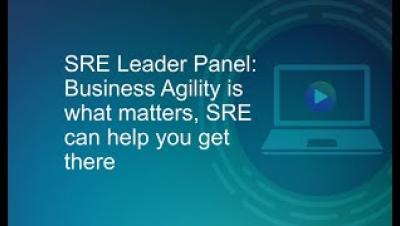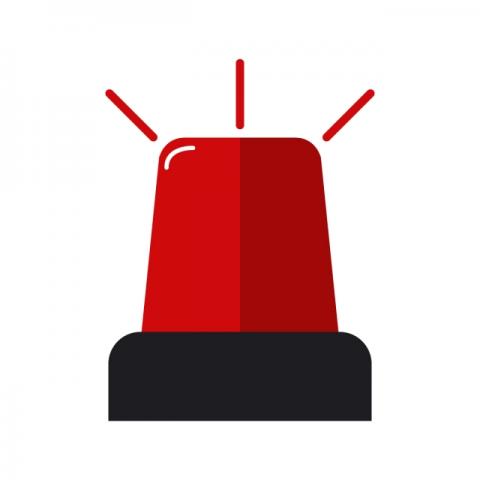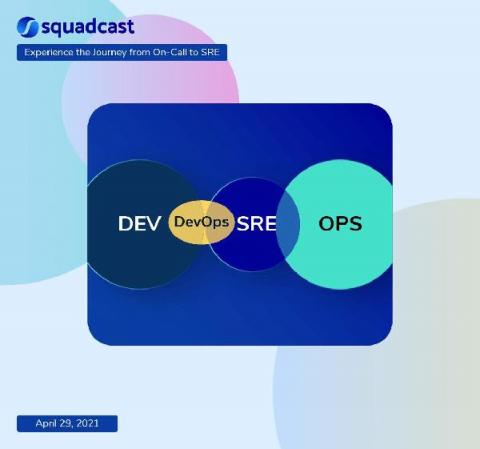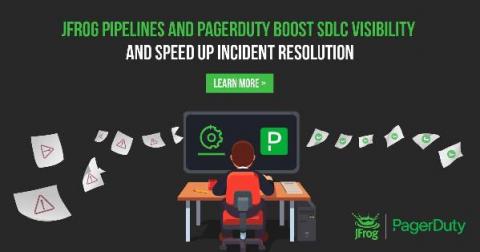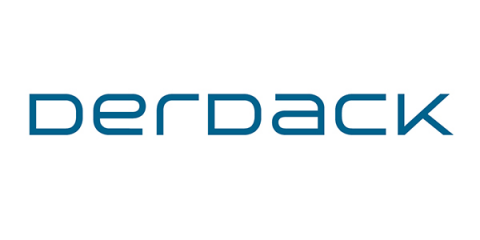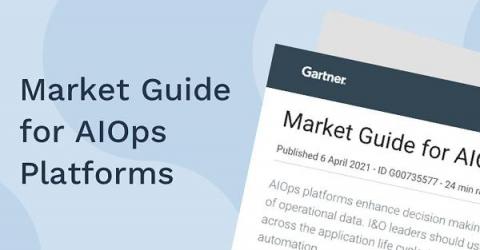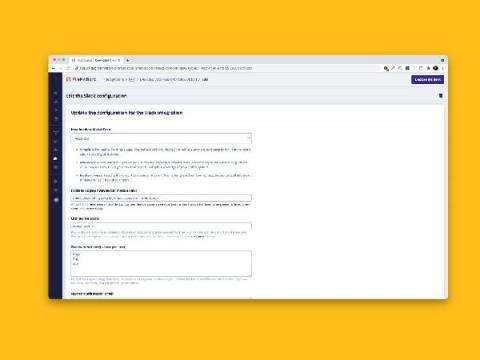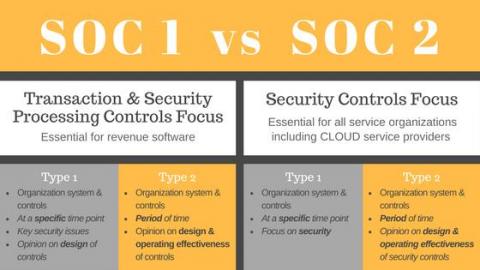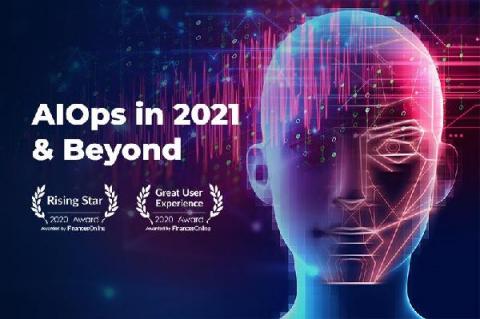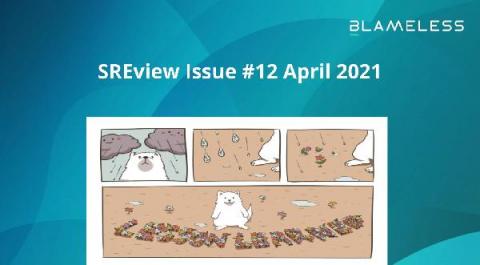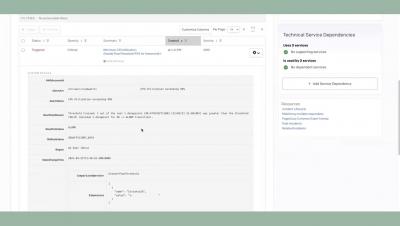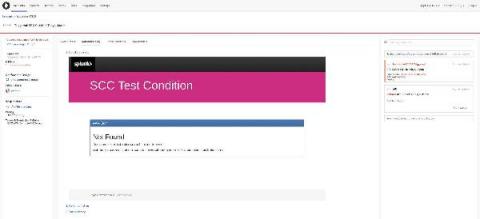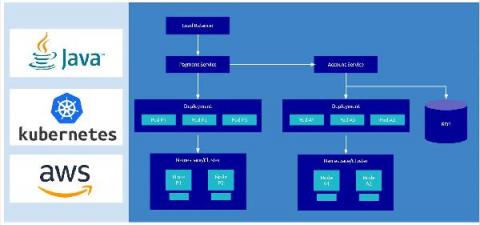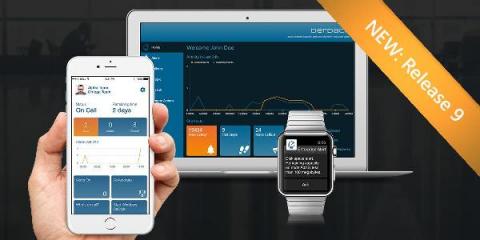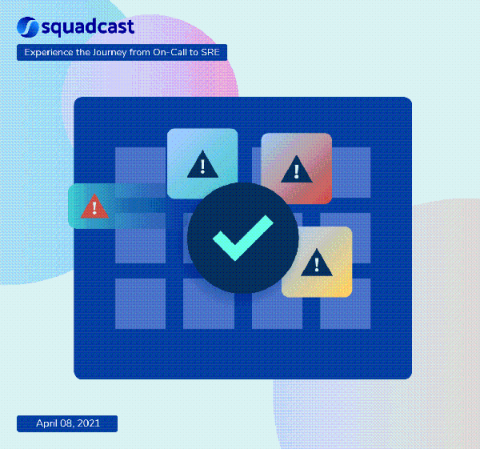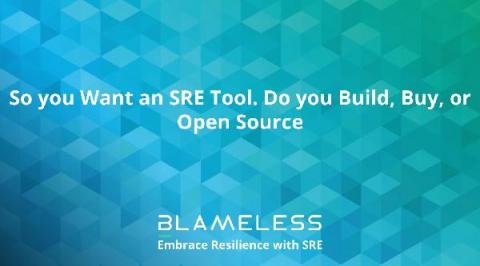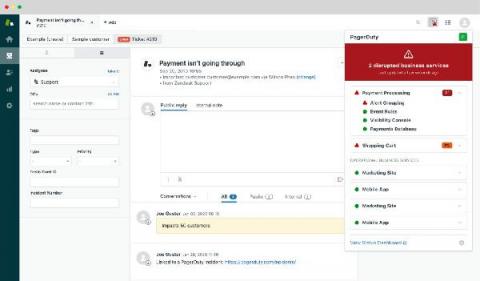Operations | Monitoring | ITSM | DevOps | Cloud
April 2021
Incident Response Alert Routing
You have identified a data breach, now what? Your Incident Response Playbook is up to date. You have drilled for this, you know who the key players on your team are and you have their home phone numbers, mobile phone numbers, and email addresses, so you get to work. It is seven o’clock in the evening so you are sure everyone is available and ready to respond, you begin typing “that” email and making phone calls, one at a time.
7 Ways SRE Is Changing IT Ops And How To Prepare For Those Changes
How Kubernetes Can Both Help and Hinder Incident Management Teams
Kubernetes makes it easier in certain ways to manage reliability. But incident response teams and SREs must also be prepared to handle the unique reliability challenges that K8s creates.
4 Major Capabilities of Automated Incident Management
Automated incident management ensures that critical events are detected, addressed and resolved in a fast, efficient manner. Automation allows incident management tools to integrate with each other and fosters instant communication across the systems. Automation tears down barriers across IT operations (ITOps) teams and ensures all departments are on the same page. Teams gain full visibility into incident status to verify that incidents are addressed by the relevant groups.
Introducing Enterprise Alert 9's New 2-Way Rest
Pragmatic Incident Response: Lessons learned from failures by Robert Ross Failover Conf 2021
JFrog and PagerDuty Extend Ecosystem Integration
Introducing 2-way REST capabilities with Enterprise Alert 9
The REST API in Enterprise Alert 9 has now been extended with a 2-way functionality. This allows to call webhooks or REST endpoints from third party systems on alarm status changes (acknowledge, close). Thus, in Enterprise Alert 9, it becomes child’s play to establish a 2-way integration with almost any REST enabled third party system.
What is Site Reliability Engineering [Simple Intro to SRE]
Enterprise Alert 9 - Launch Webinar April 2021
New Gartner AIOps Platform Market Guide Shows More Use Cases for Ops and Dev Teams
Gartner jumps right into it, describing a reorientation of a tool that has previously focused on IT service management and automation. AIOps is now also enabling a variety of new observability use cases for DevOps and Site Reliability Engineering (SRE) teams. This blog presents the guide’s major findings and a link so you can read the report for more details. About the AIOps Platform Market
FireHydrant April 2021 Product Updates: Incident Tags & Customizable Slack Incident Modals
We're excited to announce the release of two new features this month: customizable Slack incident modals and Incident Tags. Keep reading to more about how they can help your teams manage incidents better!
Creating Chaos to Achieve Reliability
How can creating chaos achieve better reliability? Chaos and reliability might seem mutually exclusive, but through the use of Chaos Engineering, SREs can bring about meaningful changes to system resiliency.
5 typical mistakes in alerting and how to avoid them
A good alerting strategy is an important prerequisite for successful operations management and the availability of mission-critical systems. But also for employee satisfaction. It’s not just about sending out alerts upon critical conditions, problems and failures at all, but more importantly, about how it is done. Here are the 5 most typical mistakes, their consequences and how to avoid them.
Join the Dark Side with Enterprise Alert
In recent times dark viewing mode for websites has gained a lot of popularity from users worldwide. This does not just apply to your favorites sites, but also for those applications that you rely on day in and day out. Enterprise Alert is no exception. We have heard your requests and are happy to announce that Enterprise Alert 9 now has a dark mode! In the footer of the Web Portal, there is now a Dark toggle. This theme will instantly change your viewing experience between Classic and Dark.
SOC 1 or SOC 2, which should you comply with and why?
Organizations today are more vulnerable than ever to cyberattacks and data breaches. Whether the attack is executed by an external actor or an insider, the unauthorized intrusion comes at a great cost. This cost may differ, depending on several factors. These include the cause of the breach, the actions taken to remediate the incident, whether there is a history of data infringements, what data was compromised, and how the organization aligned with the authorities and regulators.
AIOps in 2021 and Beyond: 5 Trends You Should Be Aware Of
Introducing Dark Mode in Enterprise Alert 9
Introducing Dark Mode in Enterprise Alert 9
The true cost of IT Ops, the added value of AIOps
Today’s IT landscape is complex, hybrid, and fast-moving, and the adoption of multi-cloud infrastructure, applications, and new digital transformation initiatives is accelerating. IT operations teams, playing a vital role in enabling the delivery of uninterrupted services and creating business value for enterprises, are finding they need to constantly grow their resources to manage all the moving pieces in their IT stack. This can get expensive … but how much are they spending?
A Day in the Life: James the IT Ops Guy Learns How to Connect All that Data
“Morning, mate,” I greeted Dinesh as he walked into the office. “Nice get up for the big day!” He was wearing a pressed shirt, rather than his usual hoodie. “Thought I’d make an effort, you know,” he grinned. We’d been planning intensely for this moment for the last week or so – our meeting with Charlie, the CIO, to present the results of our Moogsoft experiments and ask for permission to extend the rollout across the enterprise.
SREview Issue #12 April 2021
Using Coralogix + StackPulse to Automatically Enrich Alerts and Manage Incidents
Keeping digital services reliable is more important than ever. When something goes wrong in production, on-call teams face significant pressure to identify and resolve the incident quickly – in order to keep customers happy. But it can be difficult to get the right signals to the right person in a timely fashion.
PagerDuty Take the Lead- Jeff Lawson, CEO of Twilio
Coffee Break Webinar Series: Under the Covers of AIOps
Last week DevOps Institute’s Chief Ambassador, Helen Beal, and Moogsoft’s own Chief Evangelist, Richard Whitehead, continued to follow the exploits of DevOps Engineer Sarah and her journey towards AIOps and Observability enlightenment.
Should You Be an SRE or a DevOps Engineer?
SREs may have better long-term job prospects, but DevOps might be an easier career to pursue.
PagerDuty for Cloud Migration & Amazon CloudWatch Integration Workflow Demo
New Splunk Synthetic Monitoring Features Help Integrate Uptime and Performance Across the Entire Splunk Platform
For teams that build or maintain modern applications with their end-users in mind, the acquisition of Rigor means that Splunk now offers the most comprehensive synthetic monitoring solution on the market. Rigor, now Splunk Synthetic Monitoring and Web Optimization, provides best-in-class synthetic monitoring capabilities enabling IT Ops and engineering teams to detect and respond to uptime and performance issues within incident response coordination and throughout software development lifecycles.
Creating Custom Slack Commands
Site Reliability Engineers are expected to know everything that’s happening, all of the time. That’s a lot of things! To help you sift through the noise, we’ve developed a feature that lets you find accurate data about your organization on-demand. You can do this by sending custom-designed commands to FireHydrant directly from your integrated Slack account.
Accelerate Incident Resolution By Benchmarks-enriched On-call Contexts
Alerting of Service Technicians in Facility Management
In buildings today, there are numerous systems that require regular maintenance or that need attention as quickly as possible if problems are detected. This applies, for example, to heating systems, air conditioning, cooling, ventilation, elevators or fire alarm systems. Modern facility management systems are able to reliably monitor such systems.
Incident triage: a key element in your MTTR
One of the key performance indicators for IT Ops is MTTR (Mean-Time-To-Resolution). MTTR essentially measures the length of your incident management lifecycle: from detection; through assignment, triage and investigation; to remediation and resolution. IT Ops teams strive to shorten their incident management lifecycle and lower their MTTR, to meet their SLAs and maintain healthy infrastructures and services. But that’s often easier said than done.
What are MTTx Metrics Good For? Let's Find Out.
PagerDuty - Time to Value (Extended 3.75 min.)
The Cost of IT Downtime: An Overview
As the adoption of cloud computing continues to encourage innovation across industries, high-performing and resilient systems have become a necessity in order to keep pace with the competition and meet internal/external SLAs (service level agreements). In terms of customer expectations, a minute of downtime can mean thousands of dollars in lost opportunity and a soiled customer relationship. So what exactly is downtime?
Enterprise Alert 9 is now officially available!
We are excited announcing the release of the 9th generation of our alerting signature product Enterprise Alert! Release 9 contains exciting new features and improvements. Read about all the details in this blog article.
Having On-call Nightmares? Runbooks can Help you Wake Up.
Automatic Service Now ticket creation with Enterprise Alert
Automatic Service Now ticket creation with Enterprise Alert
Using Remote Actions to Create ServiceNow Incidents
Recently we have received a lot of requests for Enterprise Alert to not only alert on critical situations but to also take a proactive approach to initiate, record and track those situations through ITSM tools such as ServiceNow and BMC Remedy. This post will center around what happens when critical systems fail and tickets are not being created in ServiceNow due to a break in the workflow.
Automatic Service Now ticket creation with Enterprise Alert
Key Learnings from the Facebook Status Page
Yesterday April 8th 2021 at around 22:00 UTC, Facebook experienced a major outage where Facebook, Messenger, WhatsApp web and Instagram were down, lasting for as much as 3 hours. This was reported at Facebook’s status page, which was a good example of how to communicate and incident.
Monthly Moo Update | March 2021
Here we are a full quarter into 2021, a year that took off in a huge way for us, and the momentum continues to grow strong. March was a monumental month, and now it’s a wrap. We released significant updates across the board in almost all areas of Moogsoft, including pushing innovation to newfound levels when it comes to the ease of integrating your metric and event data.
Reduce Toil with Better Alerting Systems
A Day in the Life: Sarah the DevOps Engineer and the Beauty of AIOps
This is the fourth in a series of blog posts exploring the role that intelligent observability plays in the day-to-day life of smart teams. In this post, Sarah and company discover how AIOps gives them "the time to save time!"
Just call us "Major Incident Software Innovation of the Year"
We won an award! We're excited to share that we were named the Major Incident Software Innovation of the Year 2020 at the MIM Awards. Our CEO, Robert Ross (better known as Bobby), accepted over video on our behalf (watch the video below). A lot happened for us in 2020 -- not only from winning new business, but growing as a team, and maturing our product. We're excited that MIM felt the same way about us and we're honoured to recieve this award!
Digital Transformation in Banking: Transforming Financial Services With Incident Management
Financial services institutions have been facing pressure to modernize their operations for years. But legacy architecture and processes—along with compliance regulations—have made rapid innovation difficult to achieve. Adding to this pressure are new, digital-first competitors who accelerate the need for financial services to deliver better digital customer experiences both more consistently and at scale.
Three fundamental tips for an effective event filtering in SIGNL4
Event and alert filtering matters because alert fatigue is one of the most crucial issues in alerting and alert management. SIGNL4 implements a lightweight and effective way of filtering events. The overall process is based on alert categories. Alert categories are applied using a keyword search across the entire payload of incoming third-party events. But assigning alert categories, e.g. for alert augmentation, is not filtering.
How Would an SRE Conduct a Postmortem on the Suez Canal Incident?
The Suez Canal has been big news over the last couple of weeks. We wondered how a Site Reliability Engineer (SRE) might conduct a postmortem on what happened with the Ever Given, and what that might mean if a comparable incident occurred at a modern tech company.
Introduction to SLO, SLI and SLA
When you start researching how to improve the reliability of your software, you will soon run into terms like SLOs and SLAs. It can sound intimidating, but it's quite straightforward to understand. In this post, we will introduce these terms, the differences between them and how to start using them to make your systems more reliable.
SRE Leaders Panel: SRE Adoption as Organizational Transformation
Shifting Security Left: Tools and Best Practices
Software development pipelines typically cycle through key four processes—design, development, testing and software or update releases. Traditional pipelines perform quality and security tests only after completing the development phase. Since there is no such thing as a perfect code, there are always issues to fix. However, if significant architectural changes are needed, fixing them at the end of the process can be highly expensive.
So you Want an SRE Tool. Do you Build, Buy, or Open Source?
Behind the redesign of Spike.sh On-call
Background We recently released the biggest overhaul to one of the core features of Spike.sh - On-call schedules. Software teams use on-call schedules to designate first responders who will handle issues when they occur.
5 Ways Unplanned Work Is Disrupting Your Business
Unplanned work is rising, with consequences ranging from unhappy customers and lost revenue, to employee churn and burnout. So what is the true business cost of wasted time? In this blog, we will explore how one employee’s wasted time can impact the whole company—from operations, to development and beyond.
Product Update: Upgrade to Exporting your Retrospectives
How SREs Can React to COVID-19's Impact on Incident Management
By adding new complexity to reliability engineering and making physical war rooms a thing of the past, COVID-19 has imposed permanent changes on incident management. Here’s how SREs can respond.
Enabling Customer Service With Full Visibility Into Customer-Impacting Issues
We are delighted to announce a new Status Dashboard for the Zendesk Customer Service integration. The dashboard enables customer service agents to have real-time visibility into major incidents that are impacting their customers within the Zendesk tool suite, so they can proactively update customers when an incident occurs.
Strategies to Reduce Alert Fatigue in Your SOC Team
In a SOC (security operations center), alerts originating from hundreds of systems compete to get attention. What ensues is a security analyst’s battle to beat alert fatigue while effectively defending their organization from cybersecurity threats. Alert fatigue is a major challenge faced by security operations center (SOC) teams. The stakes are even higher since they take on the enormous responsibility of maintaining networks and data systems.


